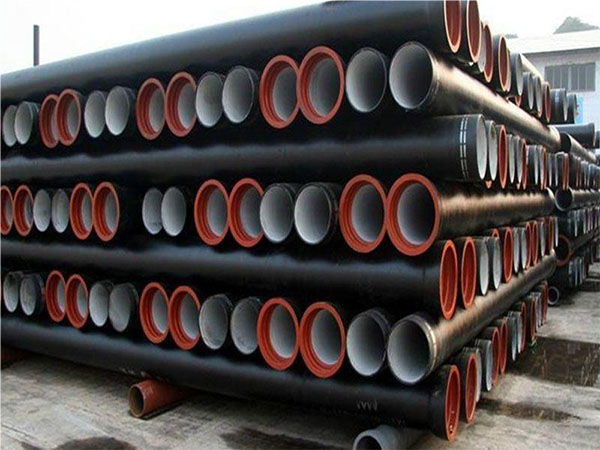In modern cities and construction projects, the selection of water supply piping materials is a key factor to determine the operating efficiency and service life of the water supply system. In the face of a wide variety of piping materials on the market, how to select the most suitable project requirements has become an important link that cannot be ignored in engineering construction.

Factors to consider when choosing water supply piping materials
In the selection of water supply piping materials, many aspects should be considered to ensure that the selection of materials suitable for specific needs. Here are some key factors:
1. Durability: Considering the durability and service life of piping materials, some materials may have a shorter service life because of environmental factors and use. The water supply pipeline is in a humid environment all the year round, which has certain requirements for the durability and corrosion of the material itself, and the selection of materials should give priority to materials with strong durability, such as copper and other materials with strong durability and corrosion resistance.
2. Corrosion resistance: Check the corrosion resistance of piping materials, especially the water supply pipeline, which is often exposed to a humid environment, and give priority to materials with good corrosion resistance, such as PVC and other materials known for corrosion resistance.
3. Temperature and pressure: Ensure that the selected piping material can meet the temperature and pressure requirements of the pipeline system to avoid pipeline damage and other problems caused by the selected material lower than the temperature and pressure requirements of the pipeline system. Certain materials, such as CPVC, are designed for hot water applications and can withstand higher temperatures.
4. Cost effectiveness: In the selection of piping materials, the cost of materials should be evaluated overall, including installation costs and long-term maintenance costs. While some materials have high upfront costs, they may provide better value over time due to their excellent durability and reliability.
5. Environmental impact: When choosing piping materials, the impact of piping materials on the environment should be considered, and materials with low energy consumption and no environmental pollution should be selected.
Several pipe materials commonly used for water supply
PVC (polyvinyl chloride) pipe: PVC pipe has the advantages of light weight, affordable, and wide use. It is commonly used in cold water supply pipes, drainage systems and field irrigation. PVC pipe is not only easy to install, but also has strong corrosion resistance and is suitable for a variety of residential and commercial plumbing applications.
CPVC (Chlorinated polyethylene) piping: CPVC piping is similar to PVC piping, but CPVC piping is specifically designed for hot water applications. Compared to PVC pipes, CPVC pipes have higher temperature resistance and are ideal for hot water supply lines in residential and commercial buildings.
Copper pipes: Copper pipes have excellent durability and corrosion resistance, and they are commonly used in water supply lines and heating systems. Copper pipes are ideal for hot and cold water applications and are ideal for water supply piping.
ABS (acrylonitrile butadiene styrene) pipeline: ABS pipeline is mainly used in water supply and ventilation systems, it has the characteristics of light weight, corrosion resistance, durability, etc., can be used in residential and commercial pipelines.
Steel pipe: There are many types of steel pipe, each type has different applications. Steel pipes are commonly used in urban water supply and drainage systems. Such as
SSAW steel pipe, compared with other water supply pipes, it can supply a large amount of water, water supply and drainage efficiency is higher, but it is vulnerable to corrosion, the need for internal and external coating to long-term use in the water supply or drainage system.
Cast iron pipe: Cast iron pipe is divided into gray cast iron pipe and ductile iron pipe, with strong pressure resistance, long service life characteristics, is the ideal choice for municipal water supply main pipe. Ductile iron pipes are more resistant to impact and corrosion than gray iron pipes.
Market trends of water supply piping materials
With the improvement of water quality safety and energy saving and environmental protection requirements, water supply piping materials are developing in the direction of high performance and green environmental protection. Stainless steel pipes and composite pipes occupy an increasingly important position in the high-end market because of their excellent sanitary performance and comprehensive advantages. Because of its convenient construction and low cost, the demand for plastic pipes continues to grow in the civil and agricultural fields. At the same time, the demand for intelligent pipelines in modern engineering has gradually emerged, such as new piping materials with water leakage monitoring functions are being widely promoted.
Key points for selecting water supply piping materials
When selecting water supply piping materials, it is necessary to consider its durability and corrosion resistance, which can ensure that the pipeline can be used in a humid environment for a long time and has certain economic benefits. When used as a daily water supply pipeline for residents, sanitary and environmentally friendly materials should be selected, such as stainless steel pipes, copper pipes or food-grade plastic pipes. Priority is given to long-term reliability and compatibility with piping system requirements.
Read more : Piping materials: carbon steel VS cast iron
